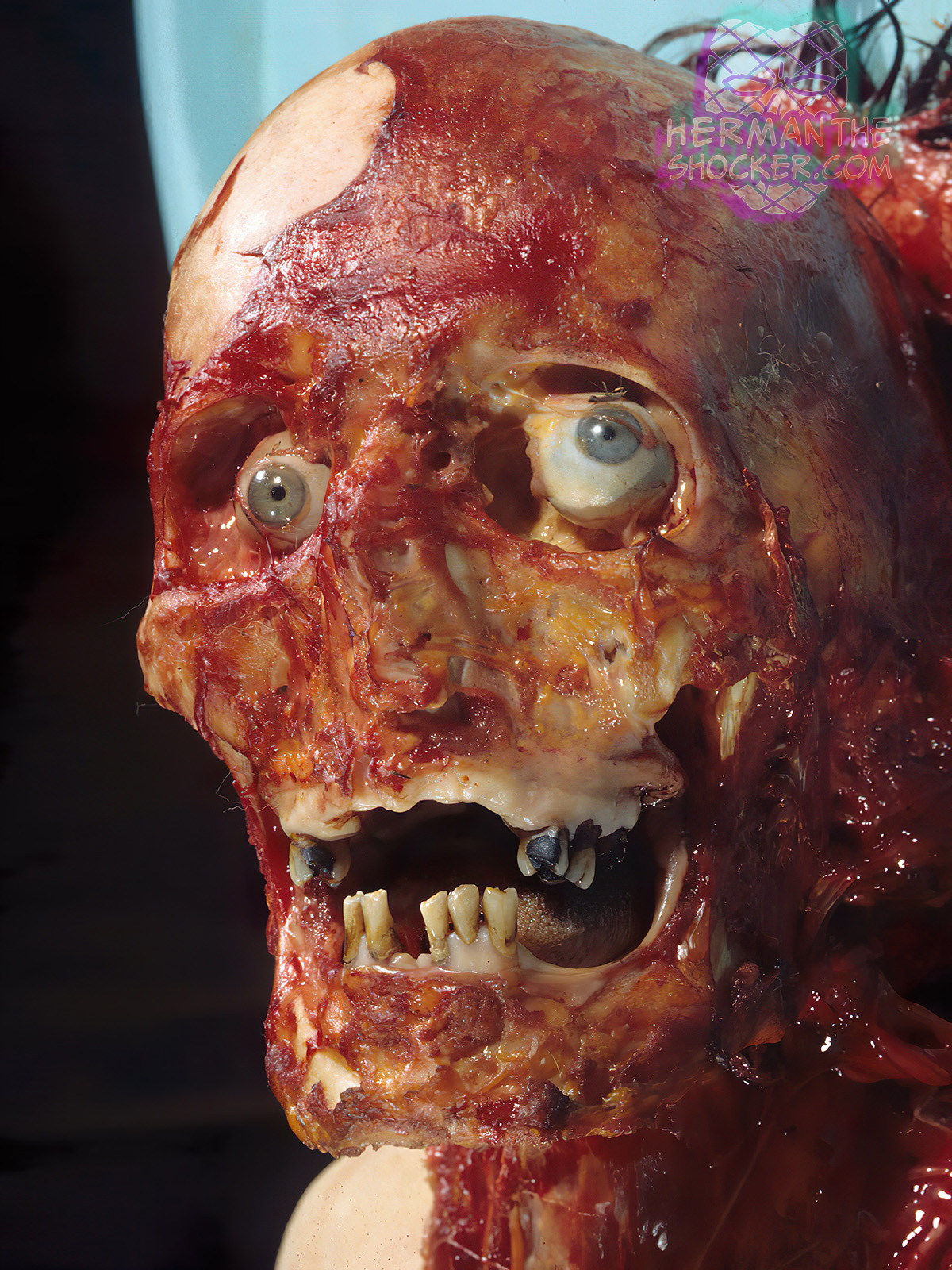The individual in the images received the injuries postmortem by a domestic dog, cause of death unknown. No further info on the case. Domestic pets, such as dogs, will sometimes feed on a dead body, with large portions of soft tissue being removed.
Animal predation is less commonly seen than insect predation. Because most putrefied bodies are recovered from a home environment, the most common animal predators are domestic cats and dogs and rodents. Bodies found outdoors may have been predated by wild birds and animals.
Postmortem animal depredation is a substantial part of the taphonomic processes a body undergoes after death. While the occurrence and presentation of such injuries are well known to forensic pathologists, the morphological appearance of these injuries may be misinterpreted by police officers or members of other investigating authorities.
A broad range of carnivores can be involved in the postmortem destruction of corpses located in open spaces or indoors (e.g. wild animals such as foxes and big cats or domestic animals such as dogs and cats). The wound margins caused by carnivores often appear more regular than those caused by rodents and V-shaped or rhomboid punctured wounds are often seen upon the intact skin in the immediate vicinity to the actual wound margins. Such stab wound-like defects represent canine tooth marks of carnivore origin. An additional criterion for animal depredation by carnivores is the presence of claw-induced linear scratch-type abrasions in the vicinity of the damaged skin areas.
In cases with postmortem animal predation, the psychological state of the animal is a possible reason for its behavior. One possible explanation for such behavior is that a pet will try to help an unconscious owner first by licking or nudging, but when this fails to produce any results the behavior of the animal can become more frantic and in a state of panic can lead to biting. The motive is not to attack the owner but is a kind of ‘‘displacement’’ behavior motivated by confusion and fear. The fact that the efforts of the animal will obviously be fruitless explains why this can easily escalate and culminate in excessive mutilation.
Latest posts









